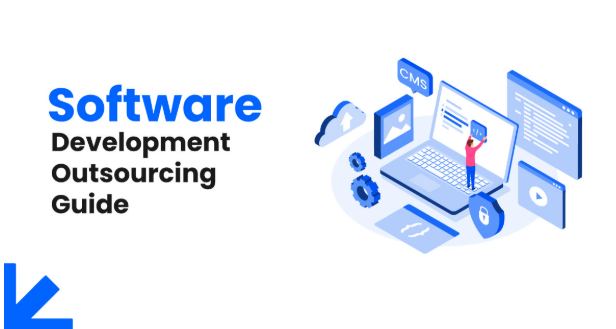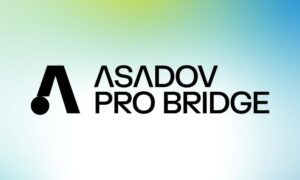Software Development Outsourcing Companies have become more than just a trend; they’re a strategic decision for companies looking to stay competitive, move fast, and build high-quality digital products without burning through resources. In 2025, businesses of all sizes are leveraging outsourcing to meet tight deadlines, cut operational costs, and access specialized talent from around the world. But like any major decision, it comes with questions: Where do you start? Who do you trust? And what model best suits your goals? This guide breaks it all down for you.
What Is Software Development Outsourcing?
In simple terms, software development outsourcing means hiring an external team or service provider to handle all or part of your software project. Instead of relying solely on in-house developers, you partner with experts from outside your company to build, design, test, or maintain applications. There are different types of outsourcing:
- Onshore: Partnering with a company in your own country.
- Nearshore: Working with teams in nearby or similar time zones.
- Offshore: Collaborating with teams in distant regions, often for cost savings.
Outsourced tasks can range from UI/UX design and mobile development to QA testing and cloud integration.
Why Companies Choose to Outsource Software Development
For many organizations, outsourcing is the fastest way to scale without compromising quality. Here are the main reasons businesses go this route:
- Cost-efficiency: You save money by avoiding the overhead costs of hiring full-time staff, especially in high-cost regions.
- Access to global talent: Tap into experienced developers, engineers, and designers worldwide.
- Speed to market: Outsourcing allows you to deliver faster, thanks to dedicated teams and streamlined workflows.
- Focus on core business: Free up your internal team to focus on what they do best.
- Flexibility: Easily scale teams up or down based on your project needs.
Popular Outsourcing Destinations in 2025
The global talent pool is massive, but some regions stand out for their skills, pricing, and reliability.
- Eastern Europe (Poland, Ukraine): Known for strong technical education and high-quality code.
- South Asia (India, Bangladesh): Offers a large workforce, competitive rates, and a growing number of tech hubs.
- Latin America (Argentina, Mexico): Time zone alignment with North America and solid English proficiency make it an attractive choice.
Each destination has its pros and cons, so your choice should depend on your budget, language preferences, and collaboration style.
Key Software Development Outsourcing Models
Not all outsourcing setups are the same. Choosing the right model depends on your goals, budget, and project complexity:
- Staff Augmentation: You “rent” skilled professionals to extend your internal team. Great for filling skill gaps.
- Dedicated Team: You hire a full team managed externally but aligned with your goals. Ideal for long-term projects.
- Project-Based: The outsourcing partner handles everything from planning to delivery. Best for defined scopes with fixed budgets.
Each model has unique advantages, and sometimes companies use a mix depending on project phases.
How to Choose the Right Outsourcing Partner
Finding the right partner can make or break your project. Here’s what to look for:
- Clarity on goals: Start with a solid understanding of what you want to achieve.
- Technical expertise: Review portfolios, case studies, and tech stacks.
- Communication and transparency: Ensure they’re responsive, fluent in your language, and aligned in time zones.
- Security standards: Ask about data protection, compliance, and IP ownership.
- Pricing and flexibility: Compare rates, payment structures, and scalability options.
Common Challenges in Software Outsourcing
Outsourcing is powerful, but it’s not without its bumps in the road:
- Miscommunication due to language or cultural differences.
- Time zone gaps leading to slower response times.
- Quality concerns if the partner lacks proper vetting.
- Data privacy and security risks.
These can be overcome with clear processes, regular check-ins, and choosing experienced providers.
Best Practices for Successful Outsourcing
Want your outsourcing experience to go smoothly? Follow these tips:
- Set clear expectations, roles, and responsibilities.
- Use tools like Jira, Trello, Slack, or Zoom for collaboration.
- Break work into manageable sprints with regular feedback loops.
- Build relationships, not just transactions.
- Align KPIs with business goals.
Real-World Examples & Use Cases
Big names like Spotify, Slack, and Basecamp have all benefited from outsourcing. Spotify, for example, used Team Augmentation for specialized AI work, allowing its internal team to focus on core music experience features. Smaller startups often outsource MVPs to test the market quickly without heavy investment.
Why Ontik Technology Is the Right Software Development Outsourcing Partner
Choosing the right partner is critical, and Ontik Technology stands out for several reasons. As one of the rising names among Software Development Outsourcing Companies, Ontik combines technical excellence with flexible delivery models that suit businesses of all sizes.
Whether you’re a startup testing a product idea or a growing company looking to expand, Ontik delivers with:
- Proven expertise in MVP Development Service, helping startups launch fast and validate ideas early.
- A robust Team Augmentation model that integrates seamlessly with your in-house teams.
- 220+ completed projects across fintech, SaaS, eCommerce, and enterprise platforms, and expertise in AI and ML engineering projects.
- Agile project delivery, ISO-aligned security practices, and transparent communication.
- Cross-functional support across strategy, design, engineering, and DevOps.
Ontik Tech dedicated developer-first approach means your project isn’t just outsourced—it’s nurtured by people who care about performance, results, and long-term success.
Conclusion
Outsourcing software development is no longer a stopgap solution it’s a strategic tool for innovation and growth. From cutting costs to accessing world-class talent, the advantages are clear. But success depends on choosing the right partner, setting clear goals, and maintaining open communication.
If you’re exploring outsourcing for your next project, consider partnering with a team like Ontik Technology that aligns with your vision, adapts to your pace, and delivers results that scale with your business.



































